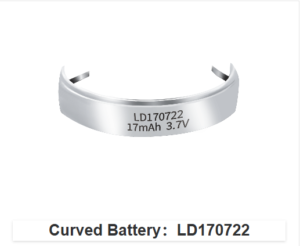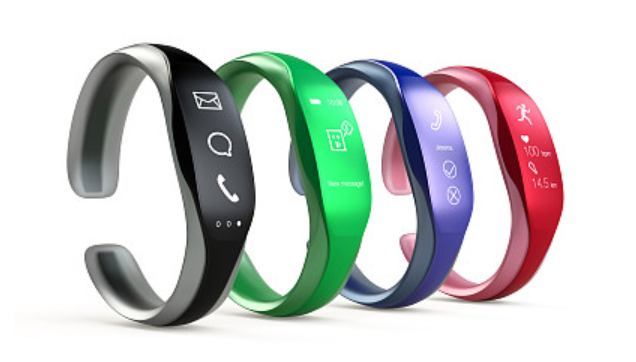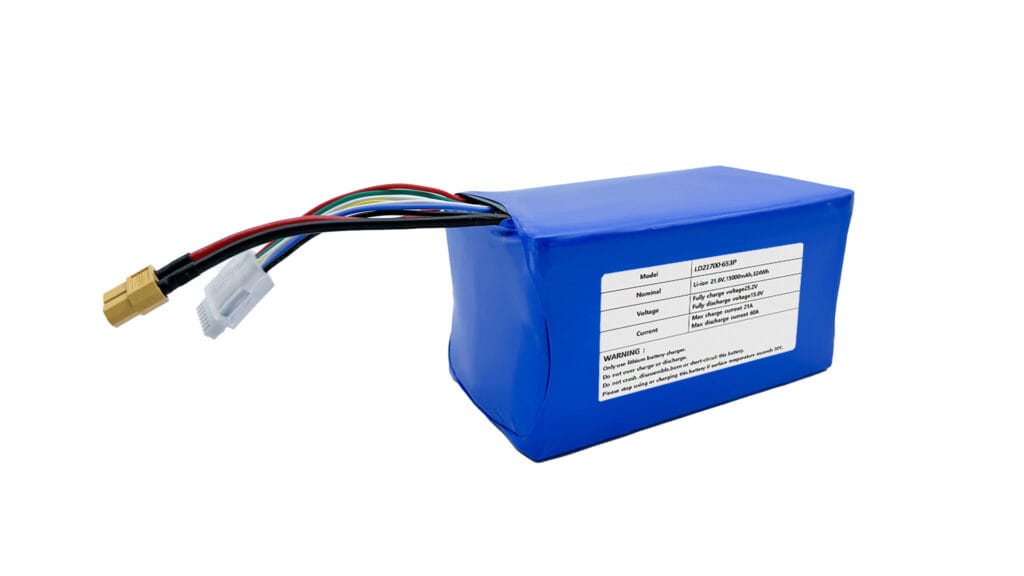When it comes to battery for smart bracelets, the right choice is crucial to ensure the device runs smoothly and lasts long enough for daily use. Smart bracelets are compact wearable devices that offer a range of features like health tracking, fitness monitoring, and notifications, all powered by a small, reliable battery. Selecting the best battery for your smart bracelet involves considering several key factors, including battery type, performance, lifespan, and safety. In this guide, we’ll help you understand these factors and why opting for a custom battery solution may provide the best performance and durability for your device.
Introduction to Smart Bracelets
A smart bracelet is a wearable device designed to be worn around the wrist, offering various functionalities such as fitness tracking, heart rate monitoring, sleep analysis, notifications, and even mobile payments. Popular brands such as Fitbit, Garmin, and Xiaomi have made significant strides in the smart bracelet market by combining aesthetics, comfort, and performance. While the design and features of these devices often get the most attention, the battery is the unsung hero that powers all these functions. Without a high-performance battery, the smart bracelet would fail to provide the user experience that customers expect.
Core Battery Requirements for Smart Bracelets
Choosing the right battery for a smart bracelet requires careful consideration of several factors:
- Size and Shape: Since smart bracelets are compact and designed for comfort, the battery must be small and fit snugly within the device.
- Battery Life: One of the most important requirements is that the battery should provide long-lasting power. Depending on the usage, users expect their smart bracelet to last anywhere from one to several days on a single charge.
- Rechargeability: Smart bracelets usually use rechargeable batteries, so it’s essential to choose one that can withstand many charge cycles without significant degradation.
- Power Output: The battery needs to supply sufficient energy for the bracelet’s sensors and features, like Bluetooth connectivity and touchscreens, without draining quickly.
- Safety: As with any electronic device, battery safety is critical. It should not overheat, leak, or cause any other hazards.
Types of Batteries Used in Smart Bracelets
Smart bracelet manufacturers typically use lithium-ion (Li-ion) or lithium-polymer (Li-po) batteries, thanks to their high energy density, light weight, and rechargeable nature.
1. Lithium-Ion (Li-ion) Batteries
Li-ion batteries are one of the most commonly used batteries in consumer electronics, including smart bracelets. They offer a relatively high energy density and a longer lifespan compared to other types of rechargeable batteries.
Key Features:
- High Energy Density: Li-ion batteries pack more power in a smaller form factor, which is ideal for compact devices like smart bracelets.
- Longer Life: These batteries can typically last for over 500 charge cycles before their performance deteriorates.
- Moderate Cost: Li-ion batteries are affordable and widely available, making them a popular choice for many smart bracelet manufacturers.
2. Lithium-Polymer (Li-po) Batteries
Li-po batteries are another popular option for smart bracelets. These batteries are similar to Li-ion batteries but come with a few differences in their construction and design.
Key Features:
- Flexibility: Li-po batteries are often used for custom-shaped batteries, allowing manufacturers to design more ergonomic smart bracelets.
- Lightweight: Li-po batteries are lighter than Li-ion, which can be a major benefit for wearable devices.
- Safety: Li-po batteries tend to be safer than Li-ion batteries due to their solid electrolyte, which reduces the risk of leakage.
3. Brand-Specific Battery Choices
Different brands of smart bracelets may opt for different battery types based on their device’s design, features, and target market. For example:
- Fitbit uses small lithium-ion batteries in their fitness trackers, ensuring a compact size with decent battery life.
- Xiaomi Mi Band often uses lithium-polymer batteries, which are smaller, lighter, and more flexible, allowing for a comfortable fit.
- Apple Watch uses a customized lithium-ion battery, carefully designed to meet the power demands of the smartwatch’s extensive features.
How to Choose the Right Battery for Smart Bracelets
When selecting a battery for your smart bracelet, consider the following:
- Capacity vs. Size: Choose a battery that can fit within the available space while offering the required capacity for long-lasting usage.
- Usage Patterns: If your smart bracelet has power-hungry features like GPS tracking or continuous heart rate monitoring, opt for a battery with a higher capacity.
- Charging Time: Ensure that the battery chosen supports fast charging, as most smart bracelet users prefer devices that charge quickly.
- Brand-Specific Requirements: Some brands may have proprietary battery designs that only work with specific models. Always check compatibility with the smart bracelet’s specifications.
- Safety and Durability: Select a battery that meets international safety standards and can handle temperature variations, particularly in wearables designed for outdoor use.
Advantages of Custom Battery Solutions
Tailored Design for Perfect Fit
Custom batteries are designed to fit the exact size and shape of your smart bracelet. This is crucial because wearable devices often come in compact and ergonomic designs, where space is limited. With a customized battery, you can maximize the available internal space while ensuring that the battery fits seamlessly into the device’s form factor. This ensures that the device remains lightweight and comfortable to wear, while still delivering the required performance.
Curved batteries or uniquely shaped lithium-polymer batteries are particularly advantageous for devices with non-standard shapes, such as oval or slim designs. Off-the-shelf batteries, in contrast, may require compromises in terms of device design or battery size.
Improved Battery Performance
A custom battery can be optimized for the specific power needs of the smart bracelet. Manufacturers can choose the exact capacity (mAh) required to power all the features of the device, such as heart rate sensors, GPS, or continuous Bluetooth connectivity, without overloading the system. This means the smart bracelet can last longer on a single charge, providing a better user experience, especially for users who rely on their wearables throughout the day.
Longer Battery Life
Custom batteries are designed with specific longevity goals in mind. By selecting the appropriate chemistry (Li-ion or Li-po), ensuring the right cell configuration, and optimizing power output, manufacturers can provide smart bracelets with extended battery life. For example, smart bracelets with sensors that continuously monitor heart rate or activity may benefit from a battery that is specifically designed to handle these power-draining tasks over extended periods without significantly reducing battery life.
Enhanced Safety Features
Battery safety is a top priority for any wearable device, and with custom battery solutions, safety features can be carefully integrated into the design. Custom batteries can be built with specific thermal management systems, such as heat shields or advanced protection circuits, that prevent overheating—one of the most common issues with batteries in wearable devices.
Additionally, customized battery management systems (BMS) can be implemented to monitor the health of the battery, ensuring safe charging cycles, preventing overcharging, and managing voltage levels. This reduces the risk of battery failure, leakage, or short-circuiting, which could compromise the device’s safety.
Higher Efficiency and Charging Speed
With custom battery designs, manufacturers can improve charging efficiency by using specialized cells that can be optimized for faster charging times. For instance, a custom lithium-ion or lithium-polymer battery can be designed to support quick charge capabilities, allowing users to charge their smart bracelets in a short amount of time.
Sustainability and Environmental Benefits
By designing a customized battery, manufacturers can select the best materials and optimize the battery’s life cycle to ensure environmental sustainability. Custom battery solutions can be built with recyclable components or safer materials, such as non-toxic lithium-polymer or solid-state batteries, which have a lower environmental impact.
Scalability and Flexibility
Custom battery manufacturers can work with companies to provide scalable solutions that grow with demand. Whether you need a small batch of batteries for a prototype or a large volume for mass production, custom solutions allow for flexible manufacturing to meet your production timeline and requirements. Moreover, manufacturers can make future adjustments or enhancements to the battery design as the smart bracelet evolves, ensuring that the battery continues to meet the changing demands of the product.
Common FAQs About Smart Bracelet Batteries
- What is the best battery for a smart bracelet?
The best battery depends on the specific design and power requirements of the smart bracelet. Lithium-polymer and lithium-ion batteries are both excellent choices. - How long does a smart bracelet battery last?
Battery life typically ranges from 1 to 7 days, depending on the features and usage. Long-lasting batteries are a must for users who need extended use. - Can I replace the battery in my smart bracelet?
Many smart bracelets feature built-in, non-removable batteries. Replacing the battery usually requires professional assistance. - Why is my smart bracelet battery draining quickly?
A quick-draining battery may be due to high usage of power-hungry features, insufficient battery capacity, or battery degradation over time. - What happens if my smart bracelet battery is not charging?
If your smart bracelet isn’t charging, it could be due to a faulty charger, a broken charging port, or a worn-out battery.
Conclusion
Choosing the right battery for your smart bracelet is crucial for its overall performance and user experience. With the right battery, your device will function optimally, ensuring it meets your health, fitness, and connectivity needs. If you’re looking for a custom battery solution for your smart bracelet, Lan Dazzle offers curved batteries that are perfectly suited for wearables. Reach out to us at www.landazzle.com for more information!






